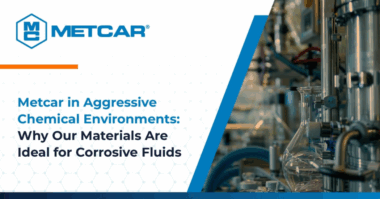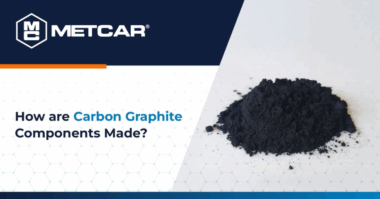Despite there being many different types of power plants in use today, the basic premise of operation is consistent from plant to plant. Some types of energy sources, such as coal, natural gas, or nuclear material, to name a few, are used to produce heat. The heat is used to boil water resulting in the creation of pressurized steam. The high-pressure steam then spins large turbines which utilize magnets and coils to produce electricity via Faraday’s law of induction. Through this process, a single power plant can power an entire city.
There are many intricacies to the operation of each individual power plant. That being said, one thing remains true from plant to plant: they must be able to handle extremely high energy systems (i.e. high temperatures and high pressures) in order to produce electricity SAFELY AND EFFECTIVELY. As a result, power plants must take advantage of materials that are engineered specifically to handle harsh environments in order to prevent potentially catastrophic situations. When it comes to handling high temperatures and harsh conditions in large power plants, CARBON GRAPHITE IS UNRIVALED by any other material – that is why carbon graphite materials have been established as an industry-standard in power plants around the world.
Safety At An Atomic Level
When discussing power plant safety, the safety hazards associated with nuclear power are usually at the forefront of the conversation. Nuclear power plant disasters – such as the ones in Chernobyl or Fukushima – have devastating effects that can last for decades. Although these incidents aren’t commonplace, engineers must take special precautions to prevent them from occurring, given their drastic consequences. For nuclear applications, in particular, carbon graphite has a special use due to the fact that CARBON IS UNAFFECTED BY NUCLEAR RADIATION EXPOSURE. When exposed to radiation, many alternate materials (i.e. metals and certain alloys) experience radiation-induced swelling, hardening, and embrittlement. This is due to the fact that radiation can actually displace atoms within these materials’ crystalline structures; this displacement creates cavities which, in turn, cause swelling, decreased density, and decreased strength. Coupled with the stresses of being in a high temperature and high-pressure environment, most other materials will fail. Carbon graphite’s resistance to these very conditions makes it an easy material choice in the design of nuclear systems.
However, carbon graphite alone is often not durable enough for nuclear power applications over time. Manufacturers rely on impregnations to bolster the material properties of carbon graphite. A custom nickel alloy has been developed which features radiation-resistant properties and can hold up to extreme environments. Its atomic structure eludes displacement caused by radiation and adds to carbon graphite strength considerably. Carbon graphite impregnated with this nickel alloy is widely used by nuclear engineers in the design of bearings and seals in nuclear systems.
Holding Up When The Pressure Gets High
Since power plant turbines rely on high-pressure steam to rotate, bearings and seals in and around these turbines need to be designed to withstand extended exposure to hot, moist environments. Under steam conditions, many alternate materials will exhibit cracking, scaling, or corrosion – but not carbon graphite. By impregnating the porosity of carbon graphite with the aforementioned nickel alloy, carbon graphite manufacturers are able to produce a material that is resistant to high-pressure steam conditions. The nickel impregnation gives the carbon graphite the strength and corrosion resistance that is required in hot, steam-filled environments, giving power plant designers yet another reason to utilize nickel alloy-impregnated carbon graphite in their designs.
The wide breadth of carbon graphite applications is truly impressive and can be attributed to this material’s incredibly versatile and durable properties. Power plant designers across the country and the world have benefited from these properties and continue to do so in modern applications. As power plant designs get more complex and highly engineered, the development of carbon graphite follows suit. Engineers in the carbon-graphite industry are constantly striving to push the boundaries of this amazingly useful material to meet the needs of the many different applications in which it is used. It is by pushing these boundaries that the impossible becomes possible.
The engineers at Metcar work tirelessly to perfect their carbon graphite materials to fit the needs of the constantly evolving industries they support. Learn more about how their custom materials outperform their peers and contribute to the safe and efficient operation of power plants, and the range of parts we can help you produce. An engineer would be happy to speak with you.




